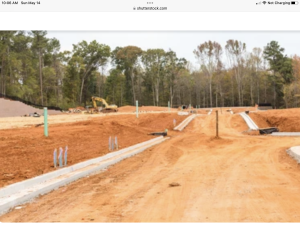The Lakewood City Council voted 6 – 3 in favor of the new Developer Reimbursement Agreement.
Yet, the discussion between council members and staff told a story that would give reasonable residents pause to wonder “why”.
But the Adam Paul group insisted this was just between developers and there would be no cost whatsoever to the residents of the homes built in these developer “reimbursement areas”.
“And once again, there will be nothing from taxpayers.”
“And once again, there will be nothing from taxpayers.”
“And once again, there will be nothing from taxpayers.”
They can say it as many times as they want to but it doesn’t change the simple fact that the plain purpose of building residential homes in residential developments is . . . . to sell homes to people who will live in them.
People who pay property taxes – they are called “taxpayers”.
And these “taxpayers” WILL IN FACT end up paying this developer and engineer calculated and imposed assessment (tax) that will . . . . reimburse the developer for infrastructure.
Developer reimbursement means just that – paying money to the developer.
Developer reimbursement does not mean developer payment. It means reimbursement. And the people doing the “reimbursing” are . . . . homeowner “taxpayers.”
Maybe some pictures will help the Adam Paul group understand how this all works:
This guy, the developer, buys the land and pays to put in the infrastructure (pipes in the ground).


The developer then sells the developed lot to this guy, the homebuilder.

And you and I buy the home paying for the
- land,
- pipes in the ground (developed lot) and
- home on the developed lot.

And we pay the developer and the builder . . . money.
For the infrastructure (pipes in the ground), for the land, for the home, and for profit to both the developer and the homebuilder.
NOW, with this new ordinance, homebuyer taxpayers will be paying a developer “reimbursement assessment” (tax) in addition to the money they pay for the home (which includes the cost of the developed lot).
AND, the developer and engineer will figure out how much that assessment (tax) is with zero oversight by the city council.
AND since the city council will not be approving these taxes, there is no readily available public record of when and for what and for how much the tax is assessed. Because it will all happen behind closed doors by the engineer and developer.
There is a reason why the Public Works Director had a hard time explaining “initial developer” and even remembering what the second one was called – “connector”.
Thats because the developer who wrote this for them just made these names up. A review of ordinances in Colorado shows NO reimbursement agreement like this one and NO reference to “initial developer” and “connector”.
It appears the staff/developer just “made it up”. There is no such thing as a “connector”.
Here is what the applicable part of the new ordinance says: (my comments in red)
“14.28.110 Reimbursement Payments
A. A Connector (builder) included within a Reimbursement Area may in such Connector’s discretion pay the reimbursement at any time after it has been allocated but shall not be required to do so until the first of the following to occur: execution of a Public Improvement agreement or similar document; subdivision of the property; issuance of a building permit for the property; or at the time of connection to the Public Improvement.
1. In the event that a Connector (builder) included within a Reimbursement Area initiates an action, other than a direct connection to the Public Improvement, that would otherwise trigger a requirement for payment, but the Connector does not immediately benefit from the initial improvement, the Connector may request deferral of the payment in writing from the Director prior to applying for any permits. See paragraph “C” below confirming that payment after direct connection may be deferred. A decision by the Director to defer payment shall not void the Connectors’ obligation triggered by additional actions or change the original term of the obligation.
2. Deferral of payment for an individual Connector shall not change the reimbursement amount for any other Connector included within the Reimbursement Area.
B. A Connector included within a Reimbursement Area shall make reimbursement payments directly to the Initial Developer, in good and verifiable funds. Upon making the reimbursement payment, the Connector making the payment and the Initial Developer shall both sign and provide to the City Engineer an acknowledgement of payment showing that the Connector and Initial Developer agree that reimbursement has been made.
C. No property will be permitted to connect to infrastructure constructed pursuant to this section or to any other part of the City’s infrastructure until the obligations associated with such property under any reimbursement agreements have been paid in full or have been deferred.
D. In no event shall the actual amount reimbursed to the Initial Developer exceed the reimbursable Construction Costs.” As determined by . . . . the developer and engineer.
1. So, developer puts in the infrastructure and sells the developed lot to the builder who sells the developed lot and home to the taxpayer.
2. Developer also creates a developer “reimbursement area” and the developer and engineer ADD an additional assessment for infrastructure (that is ALSO included in the cost of the home plus developed lot).
3. Since the builder doesn’t “immediately benefit” from the infrastructure (that is going to the the homebuyer taxpayer), he will defer payment until after the home is sold and the person who WILL get the immediate benefit – the homeowner taxpayer – will get stuck paying the assessment (tax).
4. And pay TWICE for the infrastructure. Once with the cost of the home and again with the assessment. Just like in metro districts – only this way there is no board, no votes, no public hearings.
5. Just the engineer and developer figuring out how much to tax the new homeowners to pay infrastructure costs.
Here it is again. Listen closely to the engineers explanation:
Here is the full tape:
https://youtu.be/Pq8qiyxN_dI?t=6488
And in those cases, like in Solterra, where Brookfield paid (and included in the bond debt for Solterra residents) for sewer pipes and made them bigger to accommodate what they planned for in new development in Rooney Valley, there is an agreement that says new developments can’t hook up to those pipes unless they pay a share of the cost of making the pipes bigger. But don’t need an assessment or tax to do that. No payment, no hook up. Especially given the opportunity for abuse described above. (And in this example, the money should be paid to reimburse the Solterra residents who are paying Brookfield’s developer debt, not Brookfield).
This ordinance adds no value and is ripe for abuse. Just like metro districts.
Maybe the engineer and public works director will publish each application and show us how the taxpayers don’t end up paying twice in the end. So far their own explanation isn’t working.
But someone (the mystery developer) wanted this and has probably already filed their application. Lets see what they have.

Double Dipping is abusive and should not be allowed. This will only start allowing the builder or/or developer to abuse the system across our state. This would not just start and stop with this project. New builds are too expensive as it is, you could imagine anyone selling their homes adding on this type of charge for sewer or connections of any kind even on properties that are existing. This could go state to state and make a mess of our entire system.
John – There are certainly City expenses associated with administrative, records and clerical efforts. I don’t see where the developers are responsible to pay those costs.
Typically those costs incurred by the city are covered by application fees paid by the developer when he or she files their various applications for development.